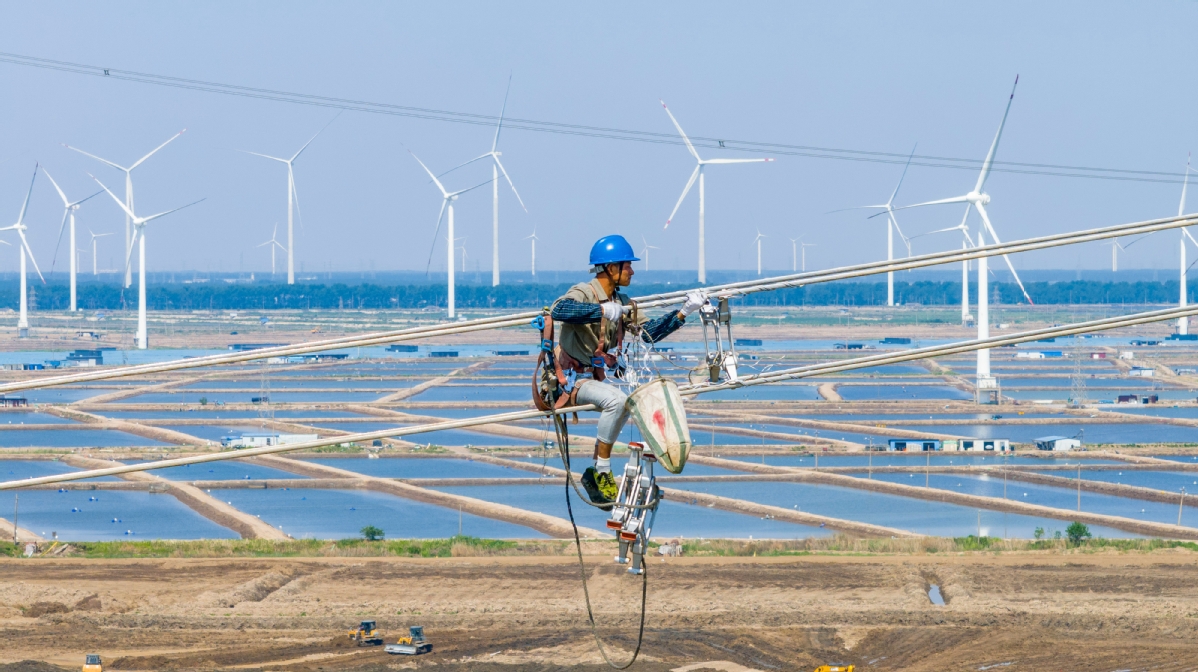
The surge in China”s green power trading volume is a remarkable indicator of the increasing adoption and market integration of renewable energy, suggesting strong demand for green electricity and a maturing trading platform facilitating these transactions, said industry experts.
China’s green power trading volume surged nearly 50 percent year-on-year in the first five months of the year, exceeding 220 billion kilowatt-hours, the China Electricity Council (CEC) said last week.
This, according to industry experts, highlights a successful move away from traditional planned dispatch toward market-driven resource allocation, and is crucial for improving efficiency, reflecting true supply-demand dynamics and enabling the effective integration of variable renewable sources.
The surge in green power trading volume underscores China’s commitment to both market reform in its power sector and its ambitious renewable energy build-out, said Lin Boqiang, head of the China Institute for Studies in Energy Policy at Xiamen University in Fujian province.
The rapid growth in green power trading, supported by the broader expansion of market-based trading, is a positive sign for achieving decarbonization goals and building a more flexible and efficient electricity system capable of handling a high penetration of renewables, Lin said.
As renewables become a larger and more central part of the energy mix, Lin said he believes their participation in market mechanisms is essential for grid stability, optimal dispatch, and ensuring their economic viability.
According to the council, nationwide market-based power trading volume increased from 1.1 trillion kWh in 2016 to 6.2 trillion kWh in 2024, accounting for 63 percent of total electricity consumption, up from 17 percent, a significant shift toward market-driven resource allocation.
New energy sources have fully participated in market competition in China in recent years, driven by record-high installed capacity and power generation, it said.
Figures released by the CEC reveal that in 2024, market-based trading of new energy power exceeded 1 trillion kWh, representing 55 percent of total new energy generation. This demonstrates the readiness of new energy sources for full participation in power market transactions.
Yang Kun, executive vice-chairman of the CEC, attributed the rapid growth of green power trading to rising green consumption demand.
Yang highlighted the environmental value of green power, its enhancement of corporate green competitiveness, and its positive contribution to the green and low-carbon transformation of the energy and power sector.
“China has significantly improved its grid infrastructure and capacity in recent years, with interprovincial transmission capacity exceeding 300 million kilowatts,” he said.
“Accelerating the construction of a unified national power market and the regular cross-provincial and cross-regional green power trading further optimizes power resource allocation nationwide.”
Continued progress in China’s electricity market reforms is not only driving clean energy consumption, but also creating the essential groundwork for a more efficient, flexible, and sustainable power system, which is critical for China’s green energy transition and high-quality economic development, said the council.
According to the National Energy Administration, the country’s top energy authority, the electricity market in China now includes a comprehensive trading system, covering medium- and long-term contracts, spot markets, ancillary services and the trading of green electricity certificates.
Last year marked a significant milestone in China’s electricity market reforms, demonstrating substantial progress over the past decade, with more than half of the country’s new energy power generation being consumed through market-based transactions, it said.
The number of participants in the market also exploded last year, with registered market entities up nearly 20-fold, from 42,000 in 2016 to 816,000 currently, it said.





